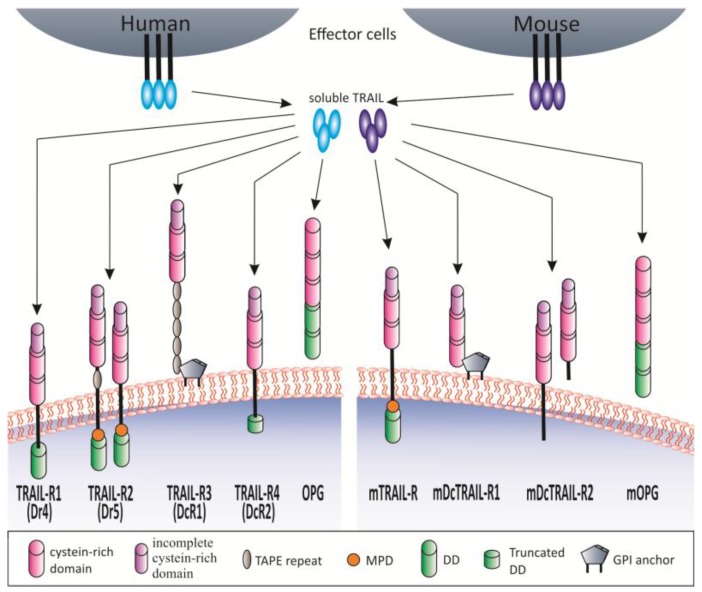Figure 1.
The human and murine tumor necrosis factor (TNF)-related apoptosis-inducing ligand (TRAIL)-TRAIL-receptor (TRAIL-R) system. TRAIL-TRAIL-R-system in humans. Human tumor-necrosis-factor-related apoptosis-inducing ligand (TRAIL) can engage four membrane-bound TRAIL-Rs and one soluble receptor, while two of these receptors can promote apoptosis (TRAIL-R1 and TRAIL-R2) and three might serve as decoys. TRAIL-R1 and TRAIL-2 express an intracellular domain comprising a death domain (DD), required for apoptosis induction. TRAIL-R2 occurs as short or long isoform, distinguishable by the absence or presence of a single TAPE (threonine/alanine/proline/glutamine) domain. TRAIL-R3 is attached to the membrane via a glycosylphosphatidylinositol (GPI) anchor and expresses five TAPE domains, but no intracellular domain. TRAIL-R4 merely expresses a truncated DD incapable of transmitting an apoptotic signal. Osteoprotegerin (OPG) represents the soluble receptor with low affinity for TRAIL. Cysteine-rich domains of the receptors are crucial for ligand binding. TRAIL-TRAIL-R-system in mice. Mice express four receptors for TRAIL, while mTRAIL-R is homologous to human TRAIL-R1 and TRAIL-R2. mDcTRAIL-R1 and mDc-TRAIL-R2 differ from the human forms. mOPG is the soluble receptor for TRAIL in the murine system. MPD, membrane-proximal domain.

